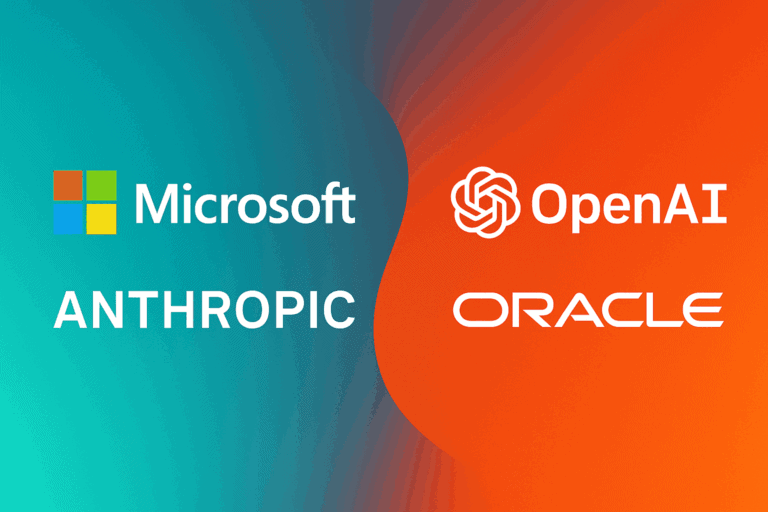Where Microsoft and OpenAI were once two peas in a pod, they are now racing further apart by the day. Redmond is busy building models it can call its own, but for now, the tech giants requires the services of Anthropic, via AWS no less. OpenAI has also been making new friends these past few years, with Oracle as its presumed favorite. What do these shifts in the AI world mean?
For end users, Microsoft’s change of course is definitely positive. The cost per user for Microsoft 365 Copilot is dropping significantly, with subscriptions often ending up being $20 cheaper as multiple modules are now included in the standard subscription for $30 per month per user. There are also plenty of changes under the hood: after GPT-5 reportedly disappointed, Microsoft is turning to Anthropic’s Claude model owing to its supposedly better performance in applications such as Excel, Word, and PowerPoint.
Microsoft sees the bundling as a way to simplify its Copilot subscriptions for businesses, according to The Verge. Above all, it shows a recognition that it will not win the AI race with a single OpenAI deal and its own division to replace the tech. Instead of Microsoft’s models such as MAI-1 taking over from GPT-5 immediately, the tech giant has to shop at Anthropic to make Copilot more viable and appealing.
Distant future
Whereas OpenAI’s models used to run mostly on Azure, this is now completely different. A deal with Google Cloud showed some diversification, but the second shoe dropped today: OpenAI has purchased $300 billion worth of AI computing power from Oracle. In July, it was already known that the two parties are planning to use 4.5 gigawatts of power to bring the American Stargate Project to life. According to the Wall Street Journal, the new deal would run from 2027 to roughly 2032.
Oracle is doing well this week anyway. On Wednesday, it had its best day on the stock market since 1992, with a 36 percent (!) rise in market cap. Oracle expects Oracle Cloud Infrastructure revenues to grow by 77 percent this year. The targeted $18 billion is expected to grow to $32 billion, $73 billion, $114 billion, and $144 billion in the following years. It is now clear that Oracle owes these huge amounts largely to OpenAI.
In AI terms, 2027-2032 is still a long way off. For now, the question remains whether the AI models themselves will deliver the revenue model that companies such as OpenAI, Anthropic, and Google are chasing. Packaging them into services seems premature and hard to bring to market just now, especially when it comes to the financial sector, healthcare, and other critical industries that won’t allow for the high degree of variability in end results that AI currently allows for. To this end, OpenAI is attempting to build a “for Government” variant of its own AI offering, but again, this is an unproven revenue model. Billions are being lost in the hunt for the best LLMs, so much so that we wondered aloud last year whether OpenAI may even go bankrupt. That still appears to be a far cry from reality, but if the hype dies out, the bubble pops or however you may wish to describe it: that money keeping OpenAI and its ilk afloat may well disappear before you know it.
Unrealistic lead
The aim on OpenAI’s part and others is to create a situation in which these companies have claimed the LLM niche wholesale and can expand their solely held expertise into all sectors, knowing that they are unassailable. This seems to be becoming a more unrealistic prospect by the day. China’s DeepSeek-R1 caused a shock reaction earlier this year: how could an unknown group of researchers suddenly build a competitive AI model? In the longer term, such concerns will cause much more than a temporary stock drop. A viable (even open-source) alternative undercutting the rest remains dangerous for the OpenAIs and Anthropics of this world. Worse may yet arrive when models become fully commoditized. What if it is not the models themselves, but the packaging around them that holds the key to AI’s profits? In that case, all the billions of dollars invested in OpenAI and the like will serve as seed money for entirely different benefactors.
Still, there is no major cause for concern for AI specialists at this juncture just yet. Mistral AI, a relative middle-of-the-road player among AI model builders, secured a €1.3 billion investment from ASML this week, for example. The French company’s expertise is plenty promising for the Dutch chip machine manufacturer, no matter whose LLMs are considered ‘state of the art’ by various benchmarks. A domain-specific application to convert the mountains of data from ASML equipment into meaningful insights is an obvious possibility.
In fact, deals such as those between ASML and Mistral AI show where the AI industry may well be headed, more so than Oracle’s massive expansion for OpenAI and the diversity of providers that Microsoft has chosen. Industry giants will apply AI for their own use in ways that are perhaps of no interest to the average employee. Whether that larger market of potential Copilot or ChatGPT customers will hold up remains to be seen. After all, there is a good chance that there will be plenty of choice for them in the long run, even free products utilizing AI.
Read also: Microsoft chooses Anthropic in addition to OpenAI
